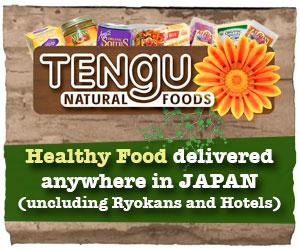TT-984 (Tourism Edition) -- The Winners and Losers in the Inbound Travel Boom

* * * * * * * * TERRIE'S (TOURISM) TAKE - BY TERRIE LLOYD * * * * * *
A bi-weekly focused look at the tourism sector in Japan, by Terrie
Lloyd, a long-term technology and media entrepreneur living in Japan.
(http://www.terrielloyd.com)
Tourism Sector Edition Monday, Mar 18, 2019, Issue No. 984
SUBSCRIBE to, UNSUBSCRIBE from Terrie's Take at:
http://mailman.japaninc.com/mailman/listinfo/terrie
+++ The Winners and Losers in the Inbound Travel Boom
Now that we are into the sixth year of Japan's amazing inbound tourism
boom, it has become quite clear who the winners and losers are among
of the nation's regional destinations. The winners are those few
iconic spots that draw such lop-sided numbers of visitors they are
bursting at the seams, while the losers, often towns and cities only a
few kilometers away, are constantly struggling to acquire foreign
visitors, no matter how much money they throw at marketing. Think of
Kyoto vs. Nara, or Osaka vs. Kobe, or Kamakura vs. Odawara. What makes
a winner and what are the common issues for the losers? These are
fundamental questions that the government and the Japan Tourism Agency
(JTA) need to figure out and take action on if they are to spread the
benefits of inbound tourism to the whole nation.
Let's recap some human psychology basics about why people want to
travel in the first place.
A. Push Factors (intrinsic desires of individual travelers)
* Rest and relaxation - Okinawa and islands
* Escape - Immersive locations like Kyoto
* Prestige - UNESCO World Heritage sites like Shiretoko and Yakushima
* Social Interaction - Pretty much any place, but you need some
Japanese language skills outside the major cities
* Adventure - Powder skiing is a huge draw for people visiting Niseko
* Health & Fitness - Winning a Japanese marathon is doable, and
luckily there are many sports events around the country
* Culture - Kyoto, Nara, places with events like Aomori's Nebuta festival
* Learning - Pretty much any place with strong skills repository, such
as Saitama for Bonsai, Arita for pottery
* Religion - Mt. Koya, Ohenro in Shikoku, and other Zen Buddhism experiences
* Business - Big Five: Tokyo, Yokohama, Nagoya, Osaka, Kobe
B. Pull Factors (assets and tangible resources of each destination)
* Affordable, safe, convenient, and value for money
* Scenic beauty and eco-tourism
* Events and activities with strong appeal
* Infrastructure and resources to support entertainment, shopping, and nightlife
* Purpose-made tourist attractions such as amusement and theme parks
(Universal gets more than 2m visitors a year)
* Well-preserved, well-presented, accessible history and culture
* Food
* Exotic atmosphere
* Adventure experiences and facilities
I think we can distill these even further - to give us 3 major
motivators why 90% of people travel to Japan's most iconic
destinations:
a) They are first-time visitors and want to get a "Disneyland-eseque"
potpourri of experiences that is immersive and represents their notion
of what Japan should be.
b) They are drawn by natural beauty and authentically preserved
locations, and seek out spots that measure up on a global level. As
hinted in the list, UNESCO World Heritage sites are a good guide to
destination quality (or, sometimes, to the politics of that
organization)
c) They are drawn by consumerism, mostly in the form of food and
shopping. So naturally they congregate to the locations that offer the
best selections, the best bargains, and generally the greatest
convenience.
As our earlier list suggests, there are of course many other reasons
for coming to Japan, but these are more subtle motivators that I think
only kick in once the traveler has been to Japan several times and the
initial shock and wonder of the place has worn off. By this time the
traveler is no longer amazed by everything they see and taste, and
instead they are capable of more analytical thinking. From basic
necessity they will have gained some language skills which allow a
deeper more meaningful interaction with the locals, and this gives
them the confidence to get off the beaten track. In fact, for regional
destinations outside the iconic shortlist, repeat visitors are the
single biggest and most important market to target.
Our three primary motivators allow us to generalize about the winners
and losers as follows.
a) First-time visitors have a limited number of days in the country,
although this is predicated by where those people live. Asians
generally have less disposable income and certainly less free holiday
time, and so their trips tend to be shorter (3-5 days) and more
intense - making them similar to the Japanese. That's why it's been
easy so far for existing tourist operators to target Taiwanese,
Koreans, and Chinese travelers. "Intense" means lots of shopping,
splurging on expensive meals, and eye-candy site seeing. Kyoto counts
as eye candy. So does Kamikochi.
[Article continues below...]
------ Terrie's Slow-Poke Cycling Tour - Kyushu -------
Last year we threatened to run a cycling tour for readers, but got too
busy to actually do it. So this year we're making amends. The first
tour, which will happen in the third or fourth week of April (just
before Golden Week) will be a 5-6 day ride in Kyushu - most likely in
the Nagasaki region. This tour, and a Hokkaido tour in late August or
early September, will have a common format.
1. The tours are potluck, not professionally run. No complaining.
Jokes and helping each other out are mandatory.
2. There will be no support cars or spare bikes or guides. Instead, we
use Google maps and take the most scenic routes to arrive at our
hotels each night.
3. Our bags will be relayed by couriers so you can ride light. Yes, we
will have inner tubes and other basic spare parts.
4. Terrie is a slow poke, so while we will indeed be covering
80km-100km a day, it will be take 6+ hours each day, with plenty of
time for lunch, photos, drinks, etc.
5. No hill climbing! Terrie is allergic to tall mountains.
6. Although the rides will run 5-6 days, people wanting to cut out at
3 days will be able to do so.
7. Our bikes will go with us on the Shinkansen. Terrie can show you
how to prepare and break your's down for simple transport.
8. If you don't have a road bike, you can rent one at
https://www.gsastuto.com/. [Excellent supplier, great prices.]
9. Anyone over 16, any gender, welcome.
10. There will be a JPY20,000 organizing fee per rider.
11. Other costs will all be at cost. Usually this works out to about
JPY13,000/day plus Shinkansen tickets.
If you're interested in a long, slow, fun, potluck cycling tour in
Japan, contact Terrie today and he will work with you and the rest of
the group to set the final dates and routes.
For more information, email: terrie.lloyd@japantravel.com
-----------------------------------------------------------
[...Article continues]
Practically speaking this means that after these first-timers have put
Tokyo and Kyoto on their bucket list, visitors will only have a spare
couple of days to spend somewhere else - usually a destination in
between or tacked on to one end. This is why Nikko, Kamakura, Osaka,
and Hida-Takayama have become popular. They are either convenient
add-ons or practical entry/exit points on an open-jaw trip. It is
difficult for other destinations to breach this "Golden Route" and
that's why I always advise secondary prefectures to forget about
first-timers. That said, locations such as Ibaraki, Kanagawa, Hyogo,
etc., should at least try to bleed off some of the traffic sitting at
their doorstep. Why they don't start subsidizing day trip bus tours
(or low-cost round-trip train tickets as Odakyu does with Hakone) is a
mystery to me.
b) Natural beauty is a top motivator for travelers the world over.
Unfortunately, because of the intensive bombings in WWII followed by
Japan's obsession with concrete, convenience, and destroy-and-rebuild
urban renewal, there is very little of the country that would qualify
as visually attractive or authentic any more. So it's no wonder that
those parts that are still intact are now top tourist draws. The
Nakasendo post towns, Hida-Takayama, Shirakawa/Gero, Kamikochi, Miyama
(north of Kyoto City), Mt. Fuji, Kakunodate, Shiretoko, Yakushima, and
Miyakojima all qualify as off-the-beaten track locations that are
powerful enough to pull tourists away from the convenience of the
Golden Route and which are all experiencing strong growth.
The problem for aspiring destinations, clearly, is that they are
hobbled by ugly scenery and widespread destruction of their historical
places. There is no easy solution for this, as the cost of recreating
a meaningful number of traditional buildings is far beyond the budget
and willpower of most regional cities to bear. Instead, a national
structural change has to happen. For example, the government could
start channeling serious funding into at least one iconic location per
prefecture around the country. Tourists expect and Japan needs to
deliver a lot more picturesque narrow streets, traditional villages,
thatched roofs, flowing waterways, and natural coastline and rivers.
If this sounds difficult, remember that I am not suggesting a
wholesale makeover for the entire country, just one iconic location
per prefecture that can be used to draw visitors in. My suggestion
would be a minimum government budget of JPY10bn per location, one per
prefecture - this would be about 10 years worth of the new tourist
tax.
Or, better still, to do what Italy did in the 1990's and make
agri-tourism spending by farmers as tax deductible as farming itself.
In Italy over the 20 years following their legislative changes,
farmers all over the country pulled down the cheap post-WWII fibro and
concrete structures and replaced them with real wood and stone -- all
financed at low rates. Mass national awareness of a return to "slow
tourism" could be extremely powerful and even capture the imagination
of young people who until now have been fleeing the countryside.
c) My third distillation is "Consumerism", which is one of the biggest
selling points of Japan and is led by its food culture. Just about
every city around the world now has one or more Japanese restaurants,
and these are now as ubiquitous as Chinese and Indian cuisine.
Ironically many of these eateries are not run by Japanese people at
all, but so long as guests are drawn by the menus it is still a "win"
for Japan and an incremental recruitment of yet another traveler to
see and taste the real thing in the future. After food, we can add
anime/manga, samurai tales, automobiles, any made-in-Japan electronic
gadget, clothing, and machinery.
Here the challenge for smaller destinations is that Japan's major
gateway cities (for air travel) are also its main shopping meccas -
especially for first-time tourists who are experiencing sensory
overload. Perhaps for repeat tourists, the nuances of local foods
provide an attraction to go to secondary locations, such as a trek to
Suruga Bay for a particular type of shrimp, but this level of subtlety
is niche and is generally lost on foreigners. One shrimp tastes pretty
much the same as another (sashimi afficionados excepted) and I've lost
track of how many times I've had to explain to local tourism planners
that while their sea food may be the "best in Japan", foreign tourists
don't get it. Instead, the appeal needs to be to something very
identifiable and rich in sensory value. A festival with strong visual
appeal such as the Nebuta festival in Aomori is worth a hundred new
season squid markets in Miyagi.
So this all boils down to the need to provide tourists with what they
want, not what local communities think they can do. Disney, Universal,
and even Robot Restaurant understand this dynamic very well, and they
focus on immersive, illusionary escape and stimulation even though
they have to spend significant sums on the "software" (story line,
characters, etc.) and on the physical details (castles, dungeons,
etc.). Likewise, Walk Japan and Oku Japan use the Nakasendo by
supplementing it with excellent copywriting, imagery, curation, and
tour guiding in a similar fashion. Unfortunately, one huge blockage to
offering what tourists actually want is "Omotenashi" - a cringeworthy
concept that supposedly means "entertaining guests wholeheartedly".
While lots of bowing and turned up toilet roll ends may appeal to
Japanese travelers who love minutae, most foreign visitors would
simply be happy having more places that take credit cards, being able
to eat lunch after 2 pm, and getting better bread selections.
Omotenashi as it is being delivered currently is rigid, formulaic, and
divorced from what foreign guests actually want.
****************
Lastly, many thanks to the readers who pointed out that March 11 this
year was the 8th, not 7th anniversary of the Tohoku earthquake. One of
the problems with putting out the newsletter late at night is
embarrassing slip ups... :-)
...The information janitors/
***********************************************************
--------- Japan Travel Corporate Travel Services ----------
Japan Travel's Type-2 licensed travel agency business is one Japan's
few independent foreign-owned inbound DMCs. One of our specialties is
looking after corporate groups of 10-300 people. To date we have
assisted in the successful holding of training events, incentive
travel, conferences, off-sites, and team bonding programs. We have
looked after the full gamut of services, such as: international air
travel, hotels, local travel, event logistics and venues,
entertainment, micro-management of dietary needs, and special needs
customers.
We are highly motivated and are happy to work in a variety of roles
tailored to suit your needs: as a full-fledged corporate travel agency
partner, as a logistics partner for a particular issue, or as a source
of innovative experiences and venues. Looking after hard-to-please
high-tech groups is our specialty!
For corporate travel assistance, contact us at: tours@japantravel.com.
Or visit our pages at:
http://japantravel.co.jp/en/about/travel-agency/
-----------------------------------------------------------
***********************************************************
END
SUBSCRIBERS: 6,044 members as of Mar 18, 2019 (We purge our list regularly.)
+++ ABOUT US
STAFF
Written by: Terrie Lloyd (terrie.lloyd@japaninc.com)
HELP: E-mail Terrie-request@mailman.japaninc.com with the word 'help'
in the subject or body (don't include the quotes), and you will get
back a message with instructions.
FEEDBACK
Send letters (Feedback, Inquiries & Information) to the editor to
terrie.lloyd@japaninc.com.
ADVERTISING INFORMATION
For more information on advertising in this newsletter, contact
ads@japaninc.com.
SUBSCRIBE
Get Terrie's Take by giving your name and email address at
http://www.japaninc.com/newsletters/free_sign_up, or go straight to
Mailman at: http://mailman.japaninc.com/mailman/listinfo/terrie
BACK ISSUES
http://www.japaninc.com/terries_take or,
http://mailman.japaninc.com/pipermail/terrie/
Copyright 2019 Japan Inc. Communications Inc.
----------------- Japan Inc opens up Japan ----------------
J@pan Inc authoritatively chronicles business trends in Japan. Each
posting brings you in-depth analysis of business, people and
technology in the world's third largest economy.
Visit www.japaninc.com for the best business insight on Japan available.
-----------------------------------------------------------






